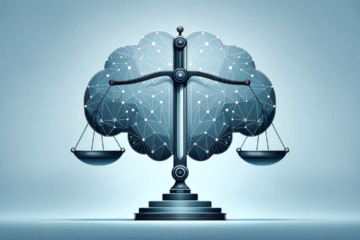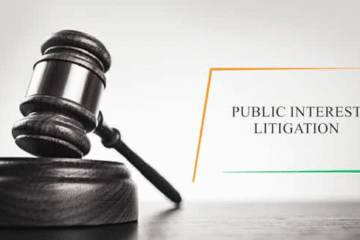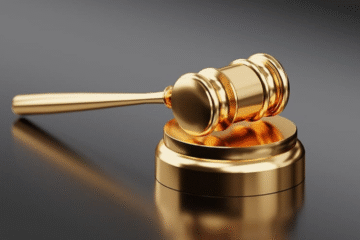
This article is written by Abhishek Kumar of 1st Year of BA.LL.B of Bharati Vidyapeeth (Deemed to be University) New Law College, Pune, an intern under Legal Vidhiya
Abstract
The doctrine of separation of power is a fundamental principle of political theory. Doctrines serve as a cornerstone for the government. Doctrine originating from the idea of political philosopher Montesquieu, the doctrine of descriptive power between executive, legislative and judiciary, aims to prevent the abuse of authority and safeguard individual liberty. This abstract explores the history, and evolution of the doctrine and examines its root and integration into constitutional framework worldwide. This research article delves into the rationale behind the doctrine of separation of power, emphasising checks and balances. It is established to maintain the government’s accountability and protect citizens from tyranny.
Keywords
Powers, Functions, Organs, legislative, Executive, Judiciary, rigid, criticism, Separate, Co-operation.
Introduction
The Doctrine of Separation of Powers stands as a linchpin in the architecture of democratic governance, embodying a profound vision of political organization that has transcended centuries and diverse cultures. Coined by the Enlightenment thinker Montesquieu, this doctrine lays the groundwork for the distribution of governmental authority among distinct branches—executive, legislative, and judicial. Its overarching objective is to mitigate the risk of tyranny by preventing the concentration of power in any single entity and, concurrently, fostering a system of checks and balances.
Origin
Origin of the tripartite Model of governance in ancient Greece and Rome. This doctrine can be traceable to Aristotle, the writing of Locke and Montesquieu Gave base to modern attempts to distinguish between legislative, executive and judiciary power.
The first model formulation of the doctrine of separation was by the French writer Montesquieu in “De l’esprit des lois” (1748), Although English philosopher John Locke had earlier argued that legislative powers should be divided between King and Parliament, Locke distinguished powers of government into three parts:
- Discontinuous legislative powers
- Continuous executive power
- Federative power
‘Discontinuous legislative powers’ Implies that rulemaking power is called into action from time to time, and not continuously. ‘Continuous executive power’ Includes all those powers which are now called judiciary and executive. ‘Federative powers’ Meet the power of conducting external affairs.
Montesquieu Who was the first time gave a systematic and scientific formulation of power in his book ‘Esprit des lois’ (The Spirit of the Laws) in 1748.
Locke and Montesquieu Drive the content of the doctrine of separation of power from the development of the history of the British Constitution. After a long war between Parliament and the king, they got the triumph of parliament in 1688 which gave supremacy to Parliament Legislative in passage of Bill of Rights. This led to ultimately a recognition by the king to exercise executive power, parliament to exercise legislative powers and the court to exercise judicial powers. England did not stick to this structural function and changed to a parliamentary form of government.
Constitutional Assembly of France in 1789 was the view that “there would be nothing like a constitution in the country where the doctrine of separation of power is not accepted” In France, where the doctrine of separation of power was preached with great force Montesquieu It was held by the more moderate parties in the French Revolution, However Jacobins Napoleon I and Napoleon III Disregarded above the theory they believed in the concentration of power. But again, it found a place in the French constitution in 1871.
Later Rousses also Supported the theory presented by Montesquieu.
In India, according to the Indian Constitution, is an express provision under article 50 of the constitution that clearly states that the state should take necessary steps to separate the judiciary from the executive i.e. Independence of the judiciary should be maintained.
Importance of the Doctrine of Separation of Power
The main object, according to Montesquieu’s Doctrine that there should be a rule of law rather than having will and whims of the official Also, another important feature of the doctrine is that there should be independence of the judiciary, i.e. It should be free from the other organs of the state, and if so, then just this would be delivered properly.
The judiciary is the scale through can measure the real Development of the state. If the judiciary does not work independently, it is the first step toward tyrannical government i.e. The power is concentrated in a single hand. So, there is a chance for misuse of power. Hence, the doctrine of separation of power plays a vital role in the creation of fair government, also giving complete justice is dispensed as the judiciary is independent.
Three Forms of Government
The Doctrine of Separation of Power Divide power and the function of these organs but without co-operation, these organs cannot run in the proper way between legislative, Executive and Judiciary.
Legislative
The legislative body of the Republic of India has the power to make laws and amend. It’s a bicameral type of legislation that is composed Rajya Sabha (Council of State) and Lok Sabha (House of People). The president is the head of the legislative and has the power to summon and prorogue either the House of Parliament or to dissolve the Lok Sabha, but the most important thing is that the President cannot exercise this power unless or until he/she takes advice from the Prime minister and Union council of ministers. Under Articles 60 and 111 presidents has the responsibility to ensure the passing of law by the parliament in accordance with constitutional mandate and the stipulative before indicating approval to the bills.
Executive
The executive form of govt and members of the executive generally belong to political parties and have control of the legislative or parliament, we can say the Executive and legislative are both deeply interrelated concepts executive greatly depends on the legislative. however Executive often has wide-ranging powers stemming from the control of government bureaucracy especially in the economic or foreign policy areas. The president is head of Executive Power.
Judiciary
The Indian Constitution provides a Single and unified judiciary in India. The Indian Judiciary interprets and applies law in India and reviews the law made by the legislative. If the law made by the legislative violates the constitution, the judiciary can invalidate the law and send it back to the legislative to reconsider the law. Indian Constitution empowers the judiciary to act as guardians of the law. Article 50 talks about the independent judiciary, which Separates the judiciary from the executive branch. The judiciary acts as an arbitrator on legal matters, to solve disputes between the Centre and State or State to state on various issues such as rivers, resources etc. The judiciary assumes that remains unaffected by pressures exerted by other branches of government, citizens or interest groups.
Effects of Doctrine of Separation of Power
Montesquieu propounded that the doctrine of separation of powers had given tremendous impact on the development of administration law and fragmentation of government. This was appreciated by English, American and other jurists and accepted by politicians. In his book ‘Commentaries on Law of England, 1765. Blackstone observed that if the legislative, executive and judiciary functions are given to one man, that is the end of personal liberty. Madison also proclaimed “the amassing of all powers in executive and judiciary in the same hand, whether of one, a few or many, and whether hereditary, self-appointment or elective may be pronounced the very definition of tyranny.” The constitutional assembly of France in 1789 announced that there would be nothing like a consultation in the country if the doctrine of separation of powers was not accepted.
Defects
The state faces many problems and has many defects when it follows the doctrine of separation of power.
- The doctrine assumes that the functions of power’s legislative, executive and judiciary are independent of distinguishable from one another But in reality, it is not There are no water-resistant compartments. It is not simple to draw a demarcating line between one power and another with mathematical precision.
- If a country accepts the doctrine, then it will be impossible for it to take action Thus, if the judiciary can’t review law made by the Legislature, it leads to arbitrary legislature that can make any law. The court could not frame the rules of procedure to be adopted by them during finalising case (judgment). The modern state has to solve complex socio-economic problems and this state affair also makes it impossible to stick to this doctrine. justice Frankfurter said ‘enforcement of the rigid conception of separation of power would make modern government impossible’.
- The fundamental object behind the Montesquieu Theory was freedom and liberty for an individual, but it couldn’t be achieved by rigged enforcement. In England This theory was not accepted until it was known for the protection of individual liberty to maintain freedom and liberty, the rule of law is necessary and independence, judiciary and eternal vigilance on the part of the subject.
Indian Outlook
An Indian contract doctrine of separation of power has no place in the strict sense, but the function of the different organs of a state has been sufficiently differentiated. So, one organ can’t usurp the function of another.
The president is the legislative, and executive and is also empowered to exercise judiciary powers. As per his legislative capacities, he may promulgate ordinances in order to meet the situation. Under Article 123(1)[1] “If at any time except when both the houses of the parliament are in session, the president is satisfied that the circumstances exist, which render it necessary for him to take immediate action, He may promulgate such ordinance as the circumstances appear to him to require.” If the failure of constitutional machinery president can enforce.
Under Articles 372 and 372-A[2], the president has the power to adopt any law and modification whether Necessary for the purpose or in accordance with provisions in the constitution.
Article 50 Lays emphasises separating the judiciary from the executive but in practical executive also exercises the power of the judiciary as appointment of judges, Article (124, 125 and 127). The legislative also plays the judiciary function in the impeachment of the President (Article 56). the judiciary also exercises legislative power whenever the high court or Supreme Court find a law against the Constitution or public policy power to declare it null and void. High Court or Supreme Court formulated law on the point where the legislative is silent.
Judicial Opinion
Judiciary opinion on the doctrine of separation of power is very important because the Judiciary is one of the ways through which we can determine the real growth of the state and in the Indian Judiciary given or express opinion in the following cases,
In Ram Jawaya v. State of Punjab[3] Court said on above the case that the doctrine of separation of power was not fully accepted in India. Further justice Mukherjee adds weight in the judgment that the above-said doctrine does not fully apply in India. He said: “The Indian Constitution has not indeed recognised the doctrine of suppression of power. It is absolutely rigidity but the function of the different parts, or branches of the government, have been sufficiently differentiated and consequently, it is very well said that our constitution does not contemplate the assumption by one organ or part of the state of function that essentially belongs to Another.”
I.C. Golak Nath v State of Punjab, HIDAYATULLAH, J. delivered a separate judgment agreeing with SUBBA Rao, CJ. on the following two points: (i) that the power to amend the Constitution cannot be used to abridge or take away fundamental rights; and (ii) that a law amending the Constitution is “law” under Article 13, Subha Rao give separate Judgment that “The constitution bring into existence different constitutional entities namely the union, the state and the Union territory. It creates three major instruments of power legislature, executive and judiciary. it demarcates their Jurisdiction minutely and expects them to exercise their respective power without overstepping their limits. They should function within the sphere allotted to them[4].”
In Kesavananda Bharati v Union of India[5] Court’s view was that the legislative can’t amend or modify the basic structure of the constitution This view of the judiciary follows Montesquieu’s doctrine of separation of power. None of the three of the separate organs of the republic can take over the function assigned to the other. Hence, this father confirmed the opinion of the court in the lallation to the doctrine of separation of power.
Evaluation of The Doctrine of Separation of Power
The doctrine of separation of power in a strict sense cannot be implemented in any modern state such as the United Kingdom, United States of America, France and India but it doesn’t mean doctrine is not relevant or useful nowadays. The government is an organic unity. It can’t be divided into the rigged sense.
History witnessed the doctrine of separation of power cannot run smoothly and effectively. Running government is possible only by cooperation and mutual understanding of each other, of all their organs of government. Professor Garner Said “This is not possible to categorise the function between all the branches of power.”
In my opinion, the doctrine of Montesquieu is not merely a myth or impossible thing, this is also mere truth but, in this sense, all these organs of government should exercise their power on the principle of check and balance. Significantly none of the organs usurp the essential function of other organs.
Conclusion
However, While the Doctrine of Separation of Powers has been instrumental in fostering checks and balances, its rigid application faces criticism for practical challenges and potential defects. The fluid nature of governance and the necessity for collaborative decision-making suggest that a strict, water-tight separation may be impractical. Yet, the essence of the doctrine persists, promoting a system where each organ of government exercises power with a spirit of check and balance, ensuring the protection of individual liberties and the effective functioning of democratic governance. In today’s complex socio-political landscape, the doctrine’s enduring relevance lies in its ability to guide the harmonious operation of diverse governmental functions within the overarching framework of democratic principles.
References
- https://www.drishtiias.com/daily-updates/daily-news-analysis/doctrine-of-separation-of-powers-1
- https://ijtr.nic.in/articles/art35.pdf
- https://www.lawctopus.com/academike/doctrine-of-separation-of-powers/
- https://www.legalservicesindia.com/article/1617/Separation-of-Powers-and-Its-Development-with-Special-Reference-to-India.html
- https://www.heritage.org/political-process/report/what-separation-powers-means-constitutional-government
- https://www.cambridge.org/core/journals/american-political-science-review/article/abs/meaning-of-the-separation-of-powers-an-analysis-of-the-doctrine-from-its-origin-to-the-adoption-of-the-united-states-constitution-by-w-b-gwyn-new-orleans-tulane-university-1965-pp-vii-159-300-paper/F1D4B09FAAB16ED77A160CE9B41BC899
[1] The Legislature, Constitution of India, P 150, Edition 2021
[2] Part XXI, Constitution of India, by Dr. P.K Agarwal IAS, Dr. K.N. Chaturvedi
[3] AIR 1955 SC 549.
[4] (1967) A.I.R. 1643, 1967 SCR (2) 762.
[5] A.I.R. 1973 SC 1461, 1973. 4 SCC 225.
Disclaimer: The materials provided herein are intended solely for informational purposes. Accessing or using the site or the materials does not establish an attorney-client relationship. The information presented on this site is not to be construed as legal or professional advice, and it should not be relied upon for such purposes or used as a substitute for advice from a licensed attorney in your state. Additionally, the viewpoint presented by the author is of a personal nature.




0 Comments